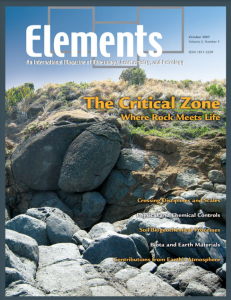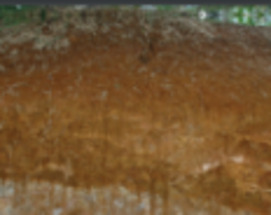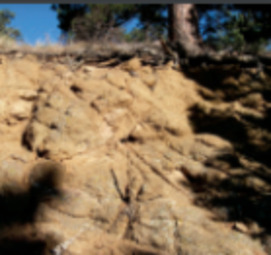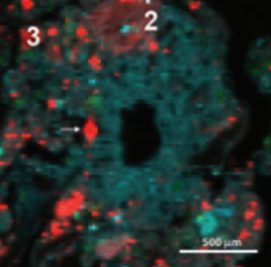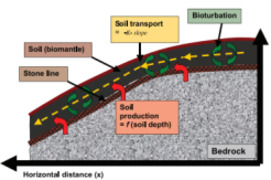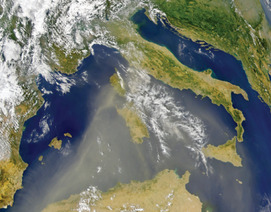
Critical Zone: Where Rock Meets Life
Susan L. Brantley, Timothy S. White, and K. Vala Ragnarsdottir – Guest Editors
Table of Contents
The Critical Zone (CZ) encompasses all fluid, mineral, gaseous, and biotic components from the outer envelope of vegetation down to the lower limit of groundwater. It supports much of life on Earth. Important, relevant societal challenges related to CZ science to be addressed in the next decade are: (1) what processes control fluxes of carbon, particulates, and other reactive gases into and from the CZ? (2) how do weathering processes in the CZ nourish ecosystems? (3) how do chemical and physical weathering processes shape the CZ? and (4) how do biogeochemical processes in the CZ govern long-term sustainability of water and soil resources?
Crossing Disciplines and Scales to Understand the Critical Zone
Physical and Chemical Controls on the Critical Zone
Soil Biogeochemical Processes within the Critical Zone
Coupling between Biota and Earth Materials in the Critical Zone
Contributions from Earth’s Atmosphere to Soil
Activation Laboratories Ltd. (Actlabs)
American Geophysical Union
Australian Scientific Instruments (ASI)
Bayerisches Geoinstitut
CrystalMaker Software
CZEN
Excalibur Mineral Corporation
GeoScienceWorld
Hudson Institute of Mineralogy
International Kimberlite Conference
Institut national de la recherche scientifique
Materials Data (MDI)
Meiji Techno America
PANalytical
Rigaku
RockWare
Springer
v3n6 Medical Mineralogy and Geochemistry
Guest editor: Nita Sahai (University of Wisconsin–Madison)
Medical mineralogy and geo- chemistry is an emergent, highly interdisciplinary field concerned with both normal and patholog- ical interactions between miner- als or amorphous inorganic solids and biomolecules or cells within the human body, and the transport and fate of prions and protein toxins in the soil envi- ronment. Prior research has, appropriately, focused on the complex genetic and molecular biological aspects, but there is a growing recognition of the vital need for understanding the sur- face and bulk properties and reactivities, especially at the challenging nanoscale character- istic of biomacromolecules and biominerals. Geochemists and mineralogists are uniquely trained to contribute to this new field because of their knowledge of mineral sta- bility, surface reactivity, mineral precipitation/dissolution kinetics, and mineral–sorbate interactions, as well as their ability to study complex systems using state-of-the-art spectroscopic and microscopic techniques.
Medical Mineralogy and Geochemistry: An Interfacial Science Nita Sahai (University of Wisconsin–Madison)
Mineralization of Bones and Teeth Adele L. Boskey (Cornell University)
Bioactive Glass Scaffolds for Bone Regeneration Julian R. Jones, Eileen Gentleman and Julia Polak (Imperial College)
Interactions between Proteins and Soil Mineral Surfaces: Environmental and Health Consequences Hervé Quiquampoix (Institut National de la Recherche Agronomique, Montpellier) and Richard G. Burns
Toxic Potential of Mineral Dusts Bice Fubini and Ivana Fenoglio (Università di Torino)
- Pathological Biomineralization of Kidney Stones Jeffrey A. Wesson and Michael D. Ward (New York University)
- Zircon – Tiny but Timely (February 2007)
- On the Cutting Edge: Teaching Mineralogy, Petrology, and Geochemistry (April 2007)
- Energy: A Geoscience Perspective (June 2007)
- Frontiers in Textural and Microgeochemical Analysis (August 2007)
- Critical Zone: Where Rock Meet Life (October 2007)
- Medical Mineralogy and Geochemistry (December 2007)
Download 2007 Thematic Preview


